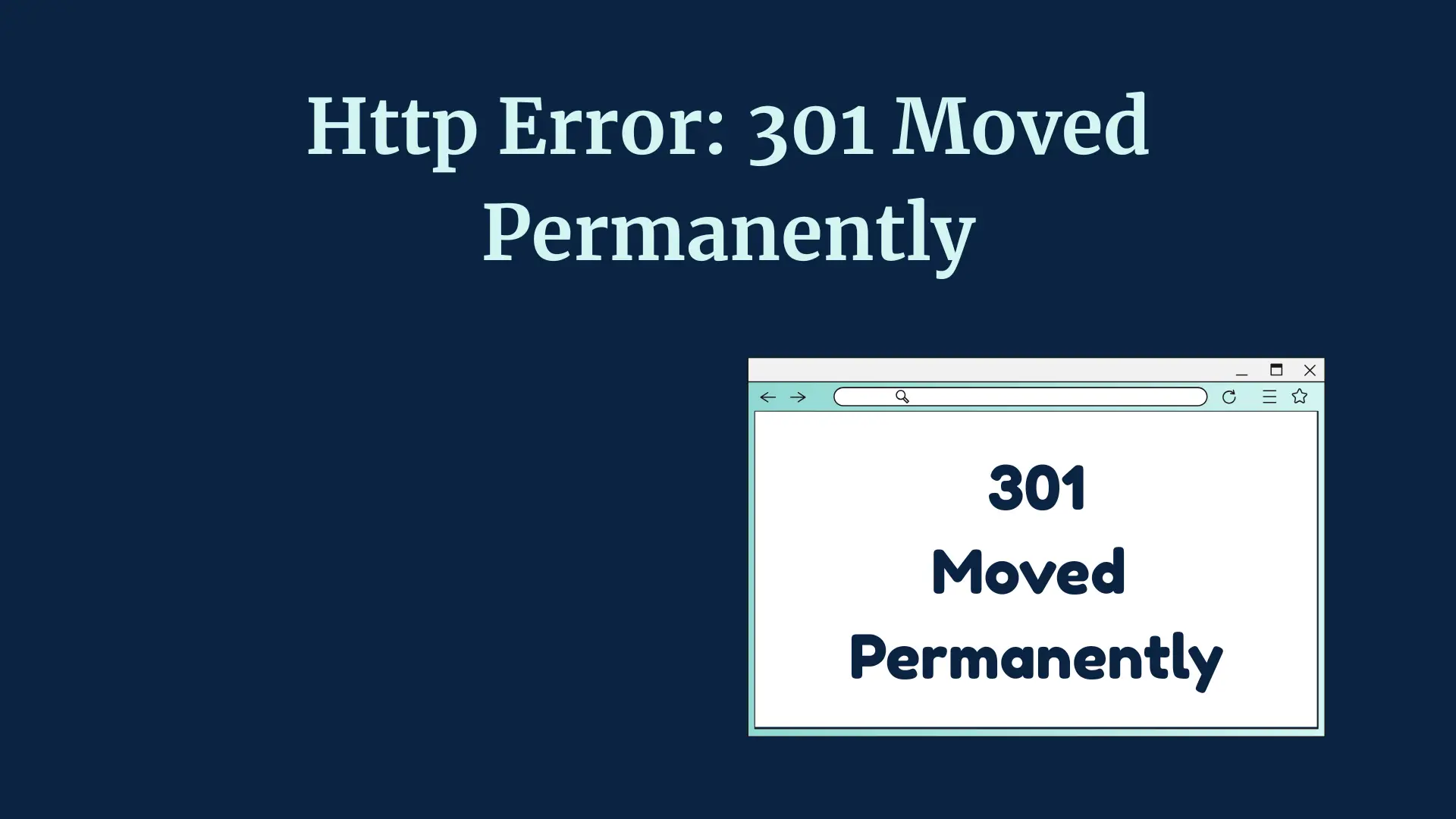If you browse the web often, you may have seen the message “HTTP Error 301 Moved Permanently.” It looks technical, but it’s actually just a way for websites to tell browsers and search engines that a page has shifted to a new permanent address. Understanding how it works helps you avoid confusion and fix issues when managing a website.
Key Takeaways
- A 301 redirect means a page has permanently moved to a new URL and helps preserve SEO value.
- Common causes include domain changes, server misconfigurations, or incorrect redirect settings.
- To fix, review redirect rules, update internal links, and test with reliable tools to avoid SEO issues.
What Is HTTP Error 301 Moved Permanently?
A 301 error isn’t really an “error” in the sense of something broken. Instead, it’s a status code that signals a permanent redirect.
➯ Meaning of the 301 Status Code
A 301 status code tells browsers and search engines that the original page has been moved to a new location for good. This means that whenever someone visits the old link, they’ll be automatically sent to the new one. It’s an essential part of keeping a site user-friendly.
➯ How It Differs from Other Redirects (302, 307)
Unlike 301, which is permanent, a 302 or 307 indicates that the redirect is temporary. Search engines treat them differently. With a 301, the SEO value usually passes to the new page, while with a 302/307, search engines keep the original link in the index. Choosing the right redirect type ensures your site’s traffic and rankings stay stable.
Common Causes of a 301 Error
A 301 often shows up when something changes on your site. Let’s look at the most common reasons.
➯ Domain Changes and URL Structure Updates
- When businesses rebrand or move to a new domain, 301 redirects keep visitors from hitting dead ends. They also come into play when you restructure a website’s URLs to make them cleaner or more SEO-friendly. Without these redirects, visitors may never find the updated pages.
➯ Incorrect or Forced Redirect Settings
- Sometimes, websites accidentally force every page to redirect to the homepage or stack multiple redirects in a row. This makes the user experience clumsy and can also confuse search engines about which page should rank.
➯ Misconfigured .htaccess or Server Rules
- On Apache servers, the
.htaccessfile manages redirects. Small mistakes in this file can create redirect loops or unintended permanent redirects. Similarly, incorrect server rules in Nginx or IIS can trigger the same issue. Always double-check syntax and rules.
➯ Canonicalization Issues (www vs. non-www, http vs. https)
- Many sites face duplicate versions of the same page, like
http://example.comandhttps://www.example.com. 301 redirects help unify these into a single version. If done incorrectly, visitors may bounce between versions or search engines may index duplicates, diluting SEO signals.
How to Fix a 301 Moved Permanently Error
Fixing a 301 is often about correcting your redirect setup and ensuring everything points in the right place.
➯ Check and Update Redirect Rules
- Start by reviewing your redirect list. Remove unnecessary steps and make sure each old page points directly to the correct new page. Clean redirect paths are faster and more reliable.
➯ Verify DNS and Hosting Configuration
- Sometimes the issue lies with your hosting setup or DNS records. Ensure your domain points to the right IP and that your hosting provider hasn’t forced unwanted redirects. This step saves a lot of troubleshooting time.
➯ Update Internal Links and Sitemaps
- If you’ve redirected old URLs, don’t leave outdated links lying around on your site. Update your navigation menus, blog posts, and sitemaps so they point to the correct pages. This makes crawling smoother and improves user experience.
➯ Test Redirects with Tools and Browsers
- Use redirect testing tools to confirm that each old link leads to the correct new destination. Tools like Screaming Frog, Redirect Checker, or a terminal command help you quickly spot problems. Testing regularly prevents SEO issues down the line.
SEO Impact of 301 Redirects
301 redirects aren’t just technical fixes. They play a big role in search engine rankings and user trust.
➯ Why 301 Redirects Help Preserve Link Equity
- When done properly, 301 redirects carry over most of the SEO value from the old page to the new one. This means that the backlinks you’ve earned continue to benefit your site. It’s one of the most reliable ways to keep authority intact.
➯ Common SEO Mistakes with 301 Redirects
Many websites make the mistake of redirecting all old URLs to the homepage. While this avoids broken links, it also confuses users and search engines. Redirecting to the most relevant page is always better. Avoiding chains of multiple redirects is another crucial step.
➯ Best Practices for SEO-Friendly Redirects
Keep your redirects simple, relevant, and direct. Always send each old URL to its most logical new version, keep sitemaps fresh, and ask webmasters to update backlinks when possible. This approach maximizes SEO benefits and ensures a smooth user journey.
Practical Examples of 301 Redirects
301 redirects are used in many everyday situations. Here are some examples.
➯ Redirecting Old Pages to New URLs
If you’ve retired a service page but created a new one, set up a redirect so customers don’t land on a 404 error. This also passes SEO strength to the new page, protecting your rankings.
➯ Moving from HTTP to HTTPS
Most modern websites now use HTTPS for better security. A 301 redirect ensures every visitor automatically lands on the secure version of your site without having to type it manually.
➯ Consolidating Duplicate Content
When different URLs point to the same content, a 301 redirect consolidates them into one version. This clears up confusion, strengthens SEO, and helps search engines know which page to prioritize.
Check Http error: 206 solution.
FAQs
What does “301 Moved Permanently” mean in simple terms?
It means the page has been permanently moved to a new URL. Visitors and search engines should always use that new link.
Is a 301 redirect bad for SEO?
Not at all. If used correctly, a 301 helps preserve rankings and keeps user traffic flowing smoothly.
What is the difference between 301 and 302?
A 301 is permanent, while a 302 is temporary. Use 301 when a page has moved for good.
Can too many 301 redirects cause problems?
Yes. Redirect chains and loops slow down load times and confuse crawlers, so always keep them minimal.
How can I check if my redirect is working?
You can use tools like Redirect Checker, Screaming Frog, or even test with a curl -I command in your terminal.
Should I update backlinks after a 301 redirect?
Yes. While the redirect preserves SEO value, updating backlinks ensures the cleanest path for both users and search engines.
Do 301 redirects work instantly?
They work immediately once set up, but search engines may take some time to fully update their index.
Do 301 redirects affect site speed?
A single redirect won’t cause issues, but multiple chains can slow down response times.
Can I remove a 301 redirect later?
Yes, but be careful. Removing it without a plan may cause users to hit dead links and lose SEO equity.

